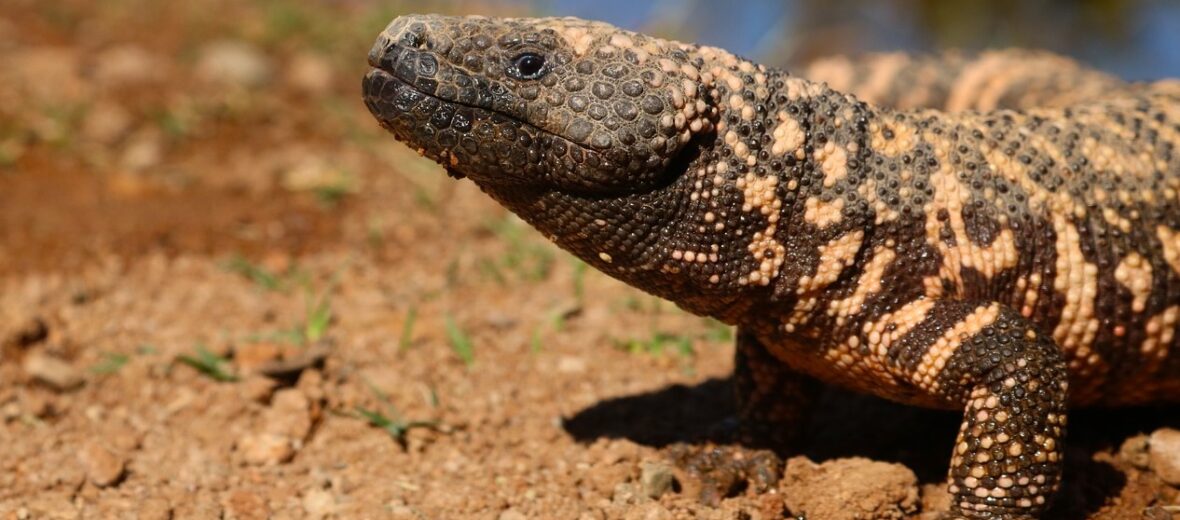
Sounds like a bad B-rated movie. But the bite of a Gila monster is nothing to laugh at. Gila monsters are not only the largest lizard native to the U.S., but they are 1 of only 2 venomous lizards in North America. Their name hails from Arizona’s Gila River basin, where they were first discovered. Gila is pronounced (hee-la). Gila monsters are only found in the Mojave, Sonoran, and Chihuahuan deserts in the southwestern U.S. and northwestern Mexico. These lizards are listed as Near Threatened, due to habitat destruction, collection, hunting, and diseases from non-native species of reptiles.
First the Stats…
Scientific name: Heloderma suspectum
Weight: Up to 5.1 lbs.
Length: Up to 2 feet
Lifespan: Up to 20 years
Now on to the Facts!
1.) They don’t have to eat very often. That’s right. These critters only eat 3 – 4 meals a year, in the wild. They actually store fat reserves in their chubby tails. They then live off of this fat in lean times.
2.) These beautiful lizards like to eat small mammals, birds, eggs, and even carrion (dead animals).
3.) Gilas are able to climb pretty well too. Scaling trees in upwards of 8 – 10 feet tall just to get at birds and/or their eggs.
4.) It is believed that there are actually 2 subspecies: the banded and reticulated Gila monsters.
5.) During mating season males will wrestle and try to pin the other down. This battle can last for up to 3 hours until the losing party backs down. The winner gets the girl.
But wait, there’s more on Gila monster!
6.) Their bladders are used as water storage units that can store up water for later use. When they urinate they release very little water waste. Due to this, they can go over 80 days without drinking!
7.) Now on to their famous bite! A Gila monster, if threatened, will latch on to you with a very powerful bite that, in itself, can be very painful. They also don’t let go for up to 15 minutes! Phase 2 of this bite is to chew until they can get their bite to their hind teeth. That’s where the venom is.
Did you know…?
Gila bites can cause severe pain, weakness, faintness, swelling, nausea, vomiting, high blood pressure, excessive perspiration, chills, fever, and breathing difficulties. Death is unlikely though.
8.) The Gila monster spends about 95% of their time in burrows that they typically take over after previously being abandoned.
9.) On a cool note, their venom paved the way to a helpful diabetic drug. Their venom contains a peptide called exendin-4. When this drug is taken it increases the production of insulin in the blood. Previous drugs wore off in minutes. This new drug lasts for hours. The peptide has been since synthesized and is now called Byetta and helps people with Type 2 diabetes.
10.) Being typically slow, they can only run 1 mph. Not exactly a contest for Usain Bolt.
Now a Short Gila Monster Video!
Also, check out the Critter Science YouTube channel. Videos added frequently!
Want to suggest a critter for me to write about? Let me know here.




Leave a Reply